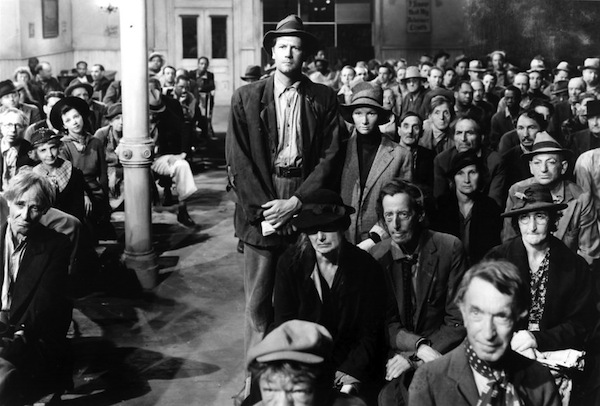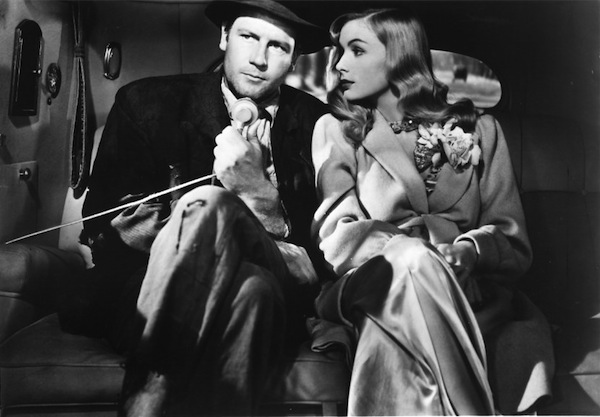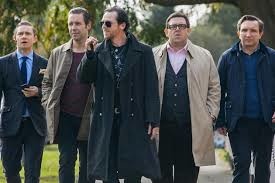In Preston Sturges’s landmark 1941 film Sullivan’s Travels, the writer-director achieves a unique balance of genre aesthetics. The film is billed as a comedy, and it more than earns that title. But a significant portion of it is actually a tragedy, completely unlike anything else in the film. The combination of both sides of the coin in this film is potent. They are almost completely different movies in plot and tone, the only constant being protagonist Sullivan. By combining both the comedic and tragic, Preston Sturges creates a Hollywood movie that defies convention.
The plot kicks off with John Lloyd Sullivan (Joel McCrea), a successful comedy director in Hollywood, wanting to direct a dramatic epic as a change of pace. He wants to make a movie called O Brother Where Art Thou? to connect with the harsh times people were experiencing during the Great Depression. He decides to ‘get into character’, in a sense, by ridding himself of all his material wealth and going to live and travel among the numerous homeless in the country. Although the studio heads and his staff consult against it, they relent when Sullivan agrees to have the press come along to document the whole journey. Along the way he meets a young woman who is just referred to by the script as ‘The Girl’, played by Veronica Lake, who is a failed actress that decides to join him on his journey.
Sturges presents some poignant commentary on the influence of the press. By having them along for the ride, it takes away the authenticity of the endeavor. The press can twist the story to their advantage anyway they desire. This is exactly the type of authorship and intrusion Sullivan is trying to get away from. He manages to convince them that he will meet them in a later city. Even though this film came out in 1941, Sturges was able to say some very telling things about the influence of the press that is prevalent in today’s society. It’s almost impossible to be genuine in front of a camera, and Sturges was able to identify this decades before reality TV became the force it is.
It’s hard to believe that Sullivan’s efforts are entirely pure, however, as afterwards he will have a comfortable home and job to return to. He’s not really living this tragedy, he’s just wading in it. Sturges seems to understand this, though. There is one scene where Sullivan and The Girl wander through a shantytown to find a place to sleep and eat. As they walk, they pass many people who have been in this situation much longer than them. What Sturges does to reflect the transparency of our protagonists is frame them separately from all the homeless and suffering around them. When the camera cuts to shots of the homeless, we only see the shadows of Sullivan and The Girl upon the masses. When we cut back to Sullivan and The Girl, they are framed fairly separate from everyone else. By showing the shadows of the protagonist duo, Sturges communicates to the audience that Sullivan and The Girl are truly only partially experiencing this tragedy.
And then something remarkable happens: Sullivan’s Travels turns into a completely different movie. When Sullivan goes around handing money to the homeless, he is ambushed by the same homeless man who stole his shoes earlier in the film. Knocked unconscious, the homeless man takes all his money and leaves him in a train cart headed out of the station. However, the homeless man is soon run over by a train. In the morgue they identify him as Sullivan because of the identification in the shoes, as well as all the money found around him. Everyone now assumes that Sullivan is dead.
Meanwhile, Sullivan awakens dazed in a trainyard where a security officer is harassing him. Sullivan retaliates by smashing his face in with a rock. At that moment I almost did a double take at the screen. Did this film just go there? It did. It just flipped a complete 180 degrees without any prediction for it. It was then I knew I was in for something I hadn’t seen before, and that the movie previously had not been leading up to.
From there the film features little to no comedy as Sullivan is rightfully arrested. All the lightness and wit the film had coasted on previously is absent now. In its place is a dark drama with no way out for our protagonist. He cannot prove his identity, and is sent to a ruthless prison similar to that in Cool Hand Luke. It is sweaty, backbreaking work on a daily basis. If he misbehaves he is sent to the isolated sweatbox. He is subject to cruelty on a regular basis, beaten down when he professes his true identity. We go from a happy-go-lucky type of film that was prevalent in the 1940s to something dark, hopeless and horrific.
It is in this tragedy, however, that Sturges is able to unveil the true value and magic of the comedy. In one scene, the prisoners all go to the local church to watch a movie. What is playing is a Walt Disney cartoon, and what happens in this scene is awe-inspiring. Sturges only shows the cartoon sparingly to provide a context for what the audience in the church is looking at. What he does primarily focus on, though, is the individual faces in the audience. Each face is covered with ecstatic joy. Each face is covered with laughter. Each face is covered with momentary relief from the troubles they are all facing in their lives. Sullivan looks around the room and realizes this along with us. It’s then he realizes the optimal power of the comedy. What he can do to help these poor people is perhaps not create a depressing tale depicting them, but instead provide relief from their troubles by making more comedies for them to lose themselves in. Earlier in the film, Sullivan remarks to The Girl, “Film is the greatest educational medium the world has ever known.” It’s only now that he, along with us, realizes the truth and variability of taste of that statement. Comedy has a power that drama may not always attain.
Preston Sturges defies expectations with this film. The whole movie, for a while, is a comedy classifiable as such by most standards of studio comedies of that time. There is a bewildered but determined protagonist, a romantic interest, and wit in the dialogue. But when Sturges flips the film into a dark drama in the last act, he completely reinvents the formula of what a comedy can be. Thanks to Sturges, a comedy no longer has to be happy to be effective, it can be tragic as well. And through that tragedy, it can be that much more poignant and lasting. I almost wish Sullivan hadn’t made it out of the prison and reclaimed his innocence and identity by the end, as it lessened the dark impact of the film to a certain extent. However, it is still effective nonetheless.
Preston Sturges was well ahead of his time. Even today most directors can’t successfully pull of the combination of the tragic and the comedic. The closest we come is the Coen Brothers (who funnily enough took the title of their film O Brother Where Art Thou? from the film Sullivan wanted to make), experts of finding comedy in the pain of their protagonists. Sturges, by combining the tragedy and comedy side by side in the same movie, was able to create a type of comedy unlike any comedy made before.
— Dylan Griffin








